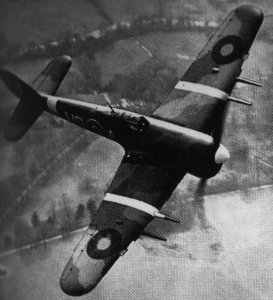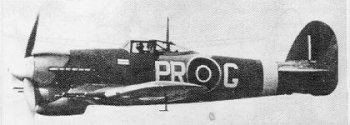The Internet Museum of World War II Aviation | home
Great Britain | Blackburn Roc | Firebrand | Defiant | Beaufighter | Mosquito | Fairey Firefly | Fairey Fulmar | Gladiator | Gloster Meteor | Hawker Hurricane | Hawker Tempest | Hawker Typhoon | Spitfire
Hawker Typhoon
To respond to a specify of RAF (1937) about a substitute of the "Hurricane" fighter, the Hawker built 2 prototypes, one for each of the engines indicated in the specifiy. So it was the "Tornado" with the Rolls Royce Vulture engine, and the "Typhoon" with the Napier Sabre engine. While the first project was abandoned, the second continued its developings, and this even in face of structural and power problems. Entered in service in 1941, the "Typhoon" was nearly to retired from service because of numerous mortal accidents due to the failure of the structure. Resolved these and other problems, from 1943 the plane began to have an important role, mainly as a fighter-bomber because its performances were good only at low altitudes. In 1944, with the introduction of 8 air-to-ground rockets, the "Typhoons" began to hit sea and land targets and thier tactical role was fundamental after the D-Day in Normandy. Some exemplars were transformed in night-interceptors (NF) and tactical recons (FR)

